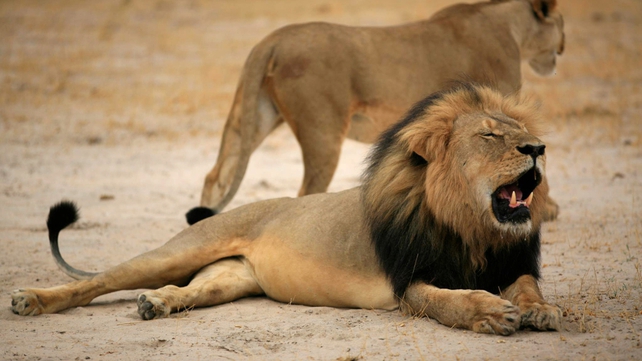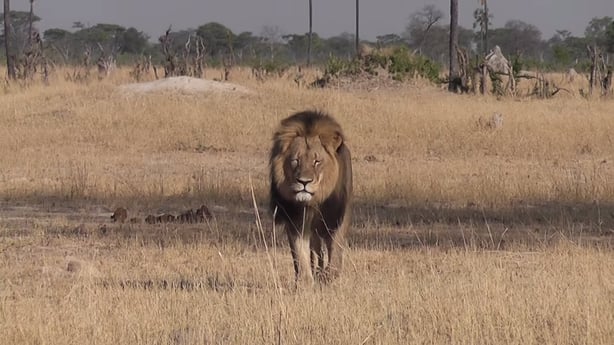The government of Australia has literally declared a war on cats and intends to poison and shoot 2,000,000 of them by 2020:
https://goo.gl/BUjnCn
It is medieval in its barbarity.
Worse, it is being done in the name of "environmentalism." The ultimate goal of the environmental movement, however, is not slaughter and death.
It is to create a peaceful and harmonious relationship between humans and the environment.
To be authentic, this goal must include respect for other species who share our planet. And yet, the environmental movement has violated this ethic by targeting species for eradication because someone says they are "non-native" and therefore their existence conflicts with the world as some humans would like it to be.
Condemning animals to death because they violate a preferred sense of order does not reject human interference in the natural world as they claim; it reaffirms it. And in championing such views, the movement paradoxically supports the use of traps, poisons, fire and hunting, all of which cause great harm and suffering—the very things they ostensibly exist to oppose.
Over the last 250 years, the story of humanity has been the story of the human rights movement—of overcoming our darker natures by learning tolerance for the foreign and respect for the diverse.
In the early 21st century, these are the cherished ideals to which humanity aspires in our treatment of one another.
And yet when it comes to our relationship with other species, these values are turned on their head, and environmentalists—the very people who should be promoting tolerance and compassion for all Earthlings regardless of their antecedents—are instead teaching disdain for some, leading the charge to kill them and turning our beautiful, natural places into war zones and battlefields. We need a different, more humane and more responsible way of seeing the world and our place in it.
“Non-native” and “invasive species” are terms that have entered the lexicon of popular culture and become pejorative, inspiring unwarranted fear, knee-jerk suspicion, and a lack of thoughtfulness and moral consideration.
They are language of intolerance, based on an idea we have thoroughly rejected in our treatment of our fellow human beings—that the value of a living being can be reduced merely to its place of origin.
And when we speak these words, repeat them and pay lip service to their perceived implication that we must revere the familiar and disdain the foreign, we should not only be ashamed to do so, but realize that we are opening the floodgates of expression to our darker natures and our most base instincts—impulses which have been responsible for the most regrettable moments in human history, and which are posed to be blamed for yet another: the deliberate massacre of hundreds of thousands of cats and kittens.
We must reject the cruel pseudo-science of invasion biology in favor of reason, common sense and a broader understanding and appreciation of the changing nature of life on Earth. And we must replace the language of biological xenophobia with the language of tolerance and compassion. It is time to drive the terms “invasive species” and “non-native” into a well-deserved extinction.
Australians, please stand up for cats. Tell your government to abandon this horrific massacre.
Learn more:
Biological Xenophobia:
http://goo.gl/yoIvsh
Rejecting Labels that Enable Great Harm:
http://goo.gl/qSGhLx
The Life of the Wild Cat:
http://goo.gl/XQtgzB
The Cat Hater's Great Hypocrisy:
http://goo.gl/Ke7dfI[/
https://www.facebook.com/nathanwinograd/posts/1007687149255529:0
Did you know that Abbott plans to kill 2 million so called feral cats in Australia. The domestic moggy is also not safe. Time to keep the cats indoors and microchipped.
Did you also know the government released many cats into the bush in the 50's to combat rabbit and other feral animals in the bush They always seem have short sighted plans, to kill one thing or another.
Trap Neuter and Return is the only answer here, as well as strict control over registering people's cats and de sexing them.
Complain to your local federal minister, let your voice be heard
https://www.facebook.com/RescueCatAdoptionsNSW
Petitioning Australian federal government
Stop the culling of feral cats and implement alternative ethical solutions.
Cat lovers, Rescues of Australia, UNITE to stop the mass culling of the un-owned cat populations and help to provide an alternate solution!
None of us wish to see native species being wiped out for any reason, however, the statistics on feral cats and their impact on our Australian wildlife species is not based on factual evidence.
There are many other factors contributing to the decline of our native species such as foxes, dingo's cane toads, snakes, spiders, rodents, deer, boars, wild horses but the main contributor is HUMANS!
Millions of our native wildlife are wiped out by humans every year due to farming, mining, land development, transport, pollution, poisons and the decimation of natural habitat but still we blame it solely on the cats?
Yet Mr Abbot has approved a mass cull of feral and stray cats in Australia based on unproven figures provided by Greg Hunt, arch cat nemesis and coal mine fan.
Greg Hunt says "There are up to 20 million feral cats taking up to four native Australian animals a night. That is over 20 billion Australian native species being destroyed a year."
None of these figures are based on factual research, yet Mr Abbott has approved $6.6 million dollars of tax payers money into a program to eradicate 2 million cats over the next 5 years?
Abbott plans using poison bait molded into sausages, shooting them, hunting dogs and any other weapon of mass eradication to kill every cat that isn't indoors.
The elimination will involve the use of detector dogs, fencing, and shooting, as well as the use of a new poison bait called "Curiosity," which has been developed by the government and a private biotech company over several years.
A toxic compound in the bait stops the flow of oxygen within the poisoned cat, and is described in the government's plan as "The new humane feral cat bait." It will be placed inside pieces of meat that are molded to resemble sausages." I don’t think starving an animal of oxygen is very humane at all do you?
Not only will feral cats in the outback be targeted, any cat within a community is also at risk of being culled.
Any person with an app to report a stray cat in their area will be contributing to data about cats in their community. This means that anyone who sees a cat, in the community, whether it be owned by someone or not, is asked to report it. That information will then be used to target so called 'hot spots' in the community for the eradication plan. So, for example if your neighbour or neighbours have a particular hate for your pet moggy who is lying in the sun on the front lawn, they can enter that info into the app. Your pet moggy will then be identified as a stray cat and is in need of eradication along with every other cat that is logged in that area. Cat haters and animal cruelty lovers will no doubt abuse the use of this app and place thousands of loved family pets at risk of being targeted for killing.
We must STOP this inhumane, unethical and abhorrent killing, of yet to be proven guilty of killing all of our native wildlife, cats in Australia.
There is no one perfect solution for feral animal eradication but there are other ways in which to humanely and ethically manage cat populations in Australia, Trap Neuter Return has been proven to work in greatly reducing and managing the numbers of stray and feral cats in other countries, with great success.
Yet no consideration has been given to approve the use TNR practices here in Australia, even with factual, research based evidence to show that it does work. I implore you to sign this petition to save the un-owned cat populations and to demand the government to legalize, support, fund and implement TNR programes,
in Australia for a start and to tighten regulation of cat ownership, put in place measures to control the population such as enforcing laws for keeping cats contained as dogs must be; to protect wildlife, mandatory desexing unless a breeders license is obtained after stringent legislation is created for the grounds of breeding an animal, shut down backyard breeders and enforce harsher penalties, prohibit the selling or giving away of undesexed cats, provide subsidised programs for low cost/no cost desexing to make it widely available to all Australians, provide funding and or grants for small community based rescues to assist in colony management and education programs in the community and to end the culling of cats immediately!
https://www.change.org/p/australian...m=mob-md-share_petition-no_msg&fb_ref=Defaultis false… Kill shelters are on the way out. Modern, high achieving shelters are going to make sure of that.”












